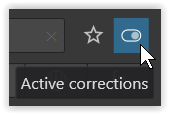Hi @John-M
Sorry to be so persistent but, despite all your excellent explanations, I find myself entrenching more firmly in the camp for not upgrading to PL6.
When I used to use Photoshop (CS3) all I did was setup the default working space for all images to be converted to on first reading - I used ProPhoto RGB.
This meant that all images were converted to that colour space and I didn’t have to care any more.
When I printed directly from PS, all I did was tell PS to manage the output profile and selected the appropriate profile for the printer/paper/ink I was targeting.
No soft proofing, no nothing, but every print came out as expected. I can only assume that the default viewing mechanism took care of mapping because I never had to dow anything explicit to get my prints right.
Now - all of a sudden - PL6 dictates that I have to complicate my workflow and virtually insists that I do soft proofing, even if all I want to do is export to an sRGB JPG file.
Yes, I am a total techie nerd, a computer programmer who has written extraordinarily complex code and an LF film and digital photographer who has held exhibitions.
You are also equally experienced and techie minded, otherwise you wouldn’t have participated in the beta test to try and help DxO find bugs.
But, what about those people who just want to take the photos of their family and friends or holidays and distribute them on the web? Are DxO really saying that they have to get into all this colour space “stuff” just for that?
I know perfectly well I have enough trouble teaching PL5 to members of our club photo, without having to now sit them down and explain about having to use soft proofing, just for web sharing or emails.
All most folks want to do is use a transparent process to open, edit and export their photos, as they see them whilst editing. Why should they have to go through the contortions of making a virtual copy, turning on soft proofing, fiddling around to eliminate OOG warnings, etc, etc, just for that use?
If it were my proposal, it would be to simply be able to preset the default workflow and, if that implied soft proofing, then just allow all editing on the soft proofed version by default.
A.A.Milne, writing for Winnie the Pooh said
“When you are a Bear of Very Little Brain, and you Think of Things, you find sometimes that a Thing which seemed very Thingish inside you is quite different when it gets out into the open and has other people looking at it.”
There are a lot of us who are “bears of little brain” who really don’t want to have things more complicated than they already are.

 - - as it was with PLv5
- - as it was with PLv5